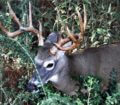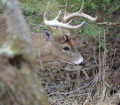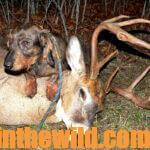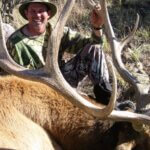Editor’s Note: Many deer hunters are accurate shots. Other hunters are superb woodsmen who identify the deer’s feeding, bedding and traveling areas. But being able to locate deer and harvest them are only two-thirds of the requirements for taking deer. To get a shot, the deer must come within bow or gun range and present the shot. Of course stand position is important. However, often mature bucks will walk through an area without well-established trails to hunt over, or there may be two or three trails coming into a region with no way to determine which trail is the best one to set-up on to bag a deer. These kinds of situations occur frequently when hunting places with high deer populations.
 The one-man drive relies more on the power of human odor to force deer to move than it does on the sights and sounds of the drivers as many deer drives do. Although many hunters don’t like the D (drive) word, the one-man drive is effective. When utilizing a one-man drive, standers move silently to take their positions on the downwind side of a thick-cover area where they believe bucks have bedded. At the appointed time, one driver starts walking back and forth across the thicket, as stealthily as possible. The driver prefers not to spook the deer but wants the bucks to recognize the presence of a human upwind of the bucks’ bedding place. If the hunter occasionally steps on a twig or breaks a limb, the deer can confirm with their ears what their noses have reported.
The one-man drive relies more on the power of human odor to force deer to move than it does on the sights and sounds of the drivers as many deer drives do. Although many hunters don’t like the D (drive) word, the one-man drive is effective. When utilizing a one-man drive, standers move silently to take their positions on the downwind side of a thick-cover area where they believe bucks have bedded. At the appointed time, one driver starts walking back and forth across the thicket, as stealthily as possible. The driver prefers not to spook the deer but wants the bucks to recognize the presence of a human upwind of the bucks’ bedding place. If the hunter occasionally steps on a twig or breaks a limb, the deer can confirm with their ears what their noses have reported.
Usually an older-age-class buck will stand up in his bed cautiously and quietly and begin to slowly sneak out of the cover and away from the oncoming driver. This technique often gives hunters a walking shot at the buck as he comes out of the thick cover. Standers even may have the good fortune of taking their shots when the buck is standing still, looking back in the thicket to try to spot the hunter.
You can conduct this type of drive with as few as two hunters – one driver and one stander – or as many as 12 hunters. The critical factors to the success of the hunt include:
 * setting the standers up downwind of the bedding area;
* setting the standers up downwind of the bedding area;
* giving the standers plenty of time to move quietly to their stand sites before the drive starts, so they don’t spook the deer in the thicket;
* making certain the driver moves very slowly and quietly and remembers that his scent, not his sound, will cause the deer to move;
* checking that all hunters wear hunter orange, so they easily can spot each other; and
* moving hunters out of an area after a drive as quietly as they’ve moved into it. Even if you don’t bag a buck, or if you do bag a buck, you can drive that same section of land again a week later, if you don’t spook all the deer out of there and have left very little human odor near this bedding site, except for the driver’s.
Two to five hunters often can drive six to 10 bedding sites in one day of hunting. You’ll spot many more deer and have a greater chance of taking an older-age-class buck when you use human odor to move those bucks, than if you sit in your tree stand and depend on the deer’s natural urge to move.
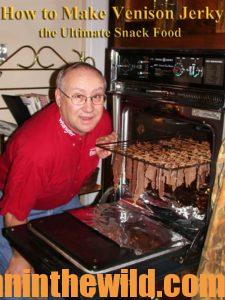 To learn more about hunting dee
To learn more about hunting dee r, go to John E. Phillips’s book, “How to Hunt Deer Up Close with Bows, Muzzleloaders and Crossbows,” available in Kindle, print and Audible versions at https://www.amazon.com/dp/B00A2A6ZG6#. To receive your free book on “How to Make Venison Jerky,” go to https://www.emailmeform.com/builder/form/Ece3UZVcOo52cKPJcL.
r, go to John E. Phillips’s book, “How to Hunt Deer Up Close with Bows, Muzzleloaders and Crossbows,” available in Kindle, print and Audible versions at https://www.amazon.com/dp/B00A2A6ZG6#. To receive your free book on “How to Make Venison Jerky,” go to https://www.emailmeform.com/builder/form/Ece3UZVcOo52cKPJcL.

